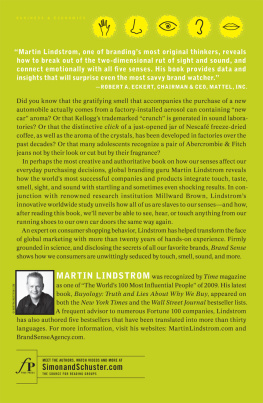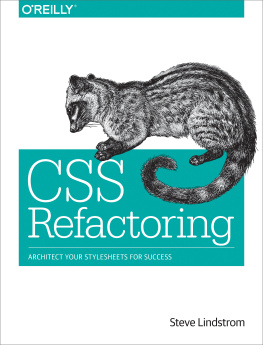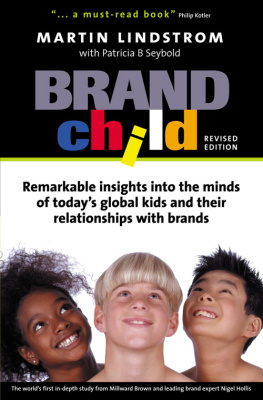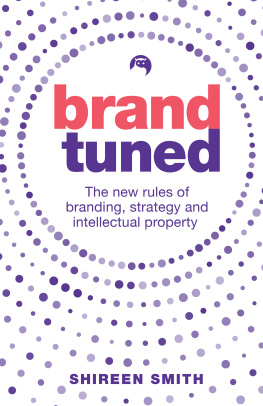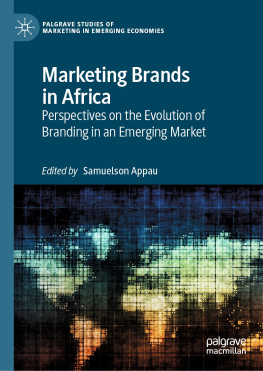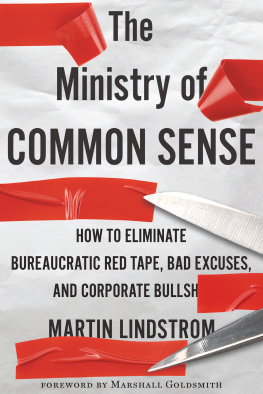



Free Press
A Division of Simon & Schuster, Inc.
1230 Avenue of the Americas
New York, NY 10020
www.SimonandSchuster.com
Copyright 2005 by Martin Lindstrom
All rights reserved, including the right to reproduce this book or portions
thereof in any form whatsoever. For information address Free Press Subsidiary Rights Department, 1230 Avenue of the Americas, New York, NY 10020
First Free Press trade paperback edition February 2010
FREE PRESS and colophon are trademarks of Simon & Schuster, Inc.
For information about special discounts for bulk purchases,
please contact Simon & Schuster Special Sales at
1-866-506-1949 or business@simonandschuster.com.
The Simon & Schuster Speakers Bureau can bring authors to your live event.
For more information or to book an event contact the Simon & Schuster Speakers Bureau at 1-866-248-3049 or visit our website at www.simonspeakers.com.
TEXT DESIGNED BY PAUL DIPPOLITO
All illustrations were created by Martin Lindstrom.
Manufactured in the United States of America
10 9 8 7 6 5 4 3 2 1
The Library of Congress has catalogued the hardcover edition as follows:
Lindstrom, Martin
Brand sense: build powerful brands through touch, taste,
smell, sight, and sound / Martin Lindstrom; foreword by Philip Kotler.
p. cm.
Includes bibliographical references and index.
1. Brand name products. 2. Business names. 3. AdvertisingBrand name
products. 4. AdvertisingPsychological aspects. 5. Senses and sensation.
I. Title.
HD69.B7 L548 2005
658.8'27dc22 2004056438
ISBN 978-0-7432-6784-7
ISBN 978-1-4391-7201-8 (pbk)
ISBN 978-1-4391-0345-6 (ebook)
For Dorit, Tore, Vibeke, and Allan
You are the words in my life
Tell me and Ill forget,
Show me and I might remember,
Involve me and Ill understand.
Benjamin Franklin
Contents
Foreword
Philip Kotler
MARKETING ISNT WORKING TODAY. New products are failing at a disastrous rate. Most advertising campaigns do not register anything distinctive in the customers mind. Most products come across as interchangeable commodities rather than powerful brands.
Yes, there are still powerful brandsCoca Cola, Harley-Davidson, Apple Computer, Singapore Airlines, BMW. They have learned how to make their brand live in the customers minds. The brand, of course, must at least deliver a distinctive benefit. No amount of dressing up will make up for this lack. All of the aforementioned brands deliver a distinctive benefit.
But distinctive brands require something more. They have to be powered up to deliver a full sensory and emotional experience. It is not enough to present a product or service visually in an ad. It pays to attach a sound, such as music or powerful words and symbols. The combination of visual and audio stimuli delivers a 2 + 2 = 5 impact. It further pays to trigger other sensory channelstaste, touch, smellto enhance the total impact. This is Martin Lindstroms basic message, and he illustrates it beautifully through numerous cases with compelling arguments.
Most companies take the easy way out to market their brands. They buy a lot of expensive advertising and make clichd claims. The companies in Martins book are much more creative. One of the main reasons to read this book is that it contains a treasury of ideas for bringing new life to brands.
CHAPTER 1
Start Making Sense
IN THE WEEKS AND MONTHS FOLLOWING publication of Buyology: Truth and Lies About Why We Buy , I was invited to appear frequently on Americas most popular morning program, the Today show. The topics we covered were variousshopping addictions, whether sex in advertising sells, subliminal advertising, and so on. During a recent appearance, I carried out a focus group with a selection of tweens, ages eight through twelve. My goal? To measure the degree to which sensory brandingthat is to say, the use of fragrances, sounds, and even textures to enhance the appeal ofproductsaffected these kids. It was like emceeing a strange new game show called Name That Sense.
First I played a handful of well-known songs associated with various well-known companies and TV shows. Most of the children were able to name them immediately, among them Disney, Apple Computer, and the signature theme music from Spongebob Squarepants and NBC. Now it was time for the smell test. The first fragrance that floated out was (and will always be) one of the most evocative aromas in the world.
Oh, I know that smell, one said.
Every kid knows that smell, another broke in.
Okay, I said. On the count of three, youre going to tell me what the brand is. Ready? One two three
They all got it: Play-Doh! The next two fragrances? Crayola crayons and Johnsons Baby Powder. The children identified those, too. Next, we graduated to a brand collage board, where only parts or fragments of companies logos or symbols were visible. Still, the kids were able to identify most if not all of the brands, from Kelloggs to Pepsi-Cola to MTV to Nike. Some, to my surprise, were even able to recognize the logos of Gucci and Tiffanys.
After scanning a handful of logos, I brought out a bunch of products from high-end designers, popular department stores, and even some generic clothing Id picked up from street vendors.
Now, blue jeans are a not uncomplicated item for most fashion-and brand-obsessed middle-schoolers. One of the girlsOliviacradled a pair of jeans in her lap.
These are from Abercrombie! she announced happily.
As offhandedly as I could, I asked, So how do you know those jeans are really from that store, and not fake?
Because of their smell, Olivia replied. She then proceeded to inhale the sweet (some might say sickly sweet) fragrance of the Abercrombie & Fitch jeans she was holding.
What Olivia was holding looked like any other pair of blue jeans. They could have come from Target. They could have come from Macys. They could have come from a factory outlet anywhere in America. But this middle-school student had identified those jeans without blinking for one reason only: their unmistakable aroma.
As strange and intriguing as Olivias brand preference might sound, my appearance on the Today show couldnt help but remind me of the first worldwide sensory branding research project I ever carried out, which concluded in 2005. It was a five-year mission involving hundreds of researchers and thousands of consumers across four continents. Our goal was to understand the rationale behind behavior like Oliviasand provide a road map for consumers to understand why they were drawn to a product, whether it was an iPod, a jar of Nescaf coffee, or even a simple breakfast cereal.
Olivia, after all, was a living, breathing example of what marketers aspire to when they create a brand. Ive long wondered: What is it that makes a child (or for that matter, an adult) fall head over heels for a brand like Apple or Kelloggs? What components of the brand form such a magical, magnetic, long-lasting connection? Does an obsessive belief in a brand ever wilt into disappointment or even boredom?
Next page
